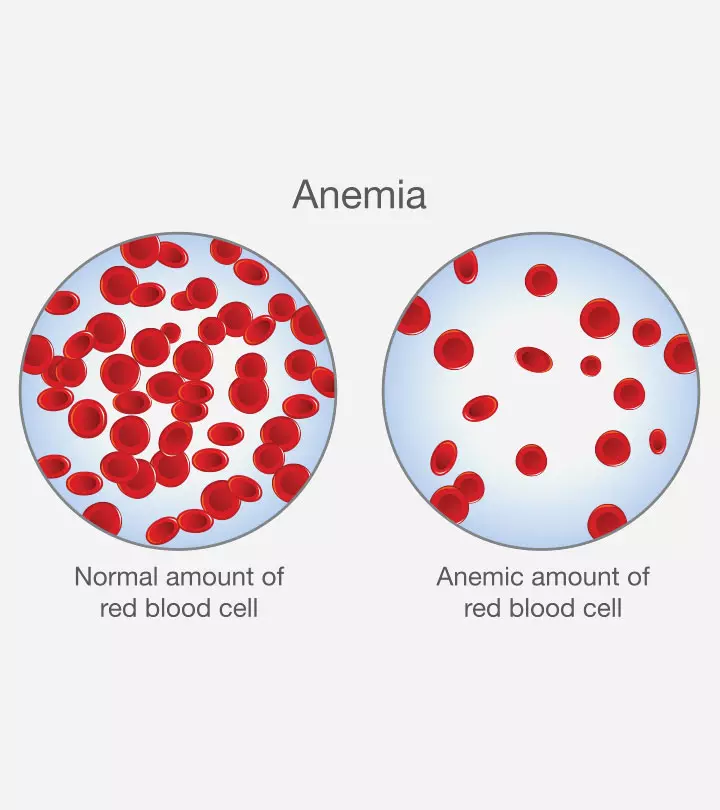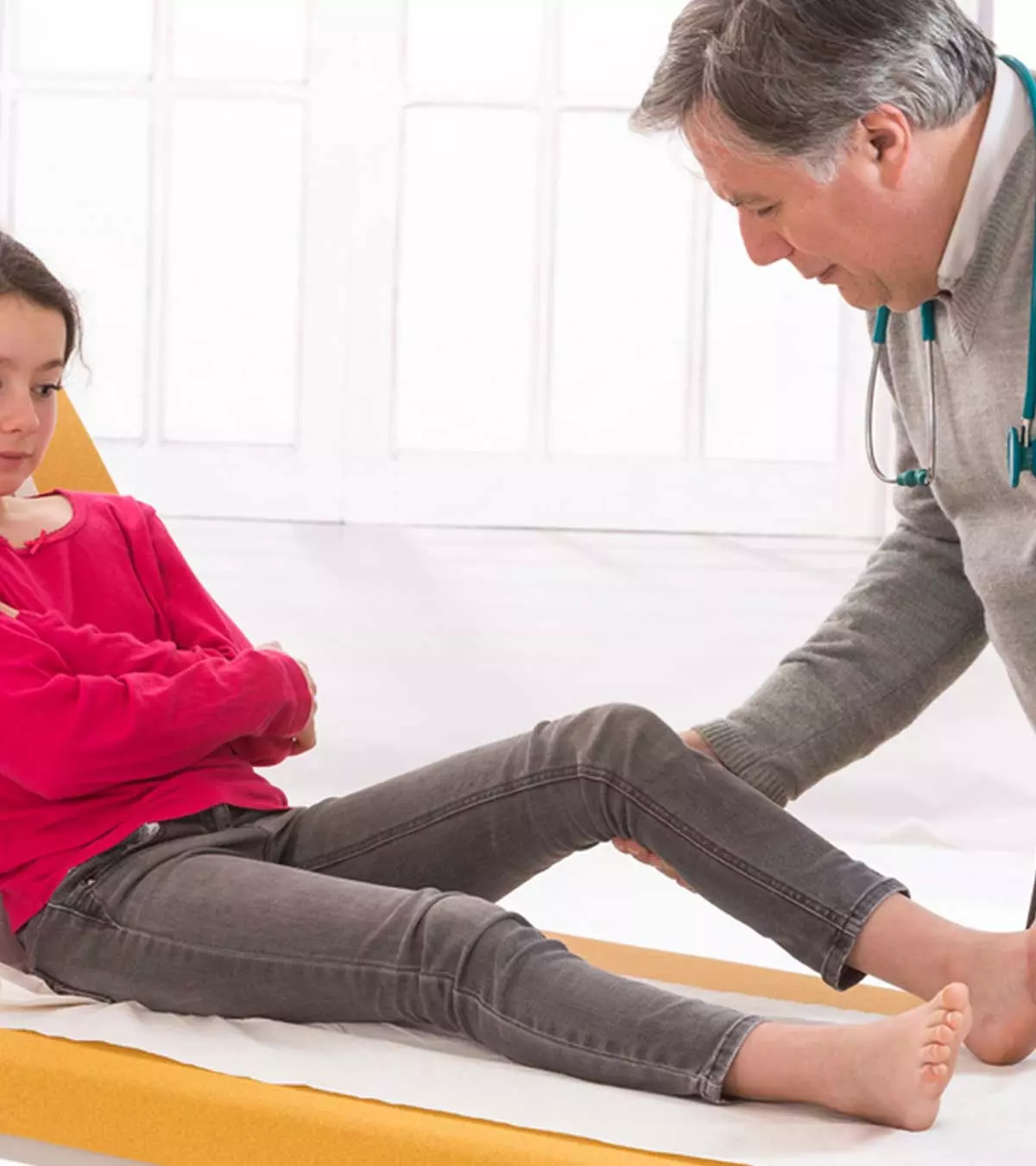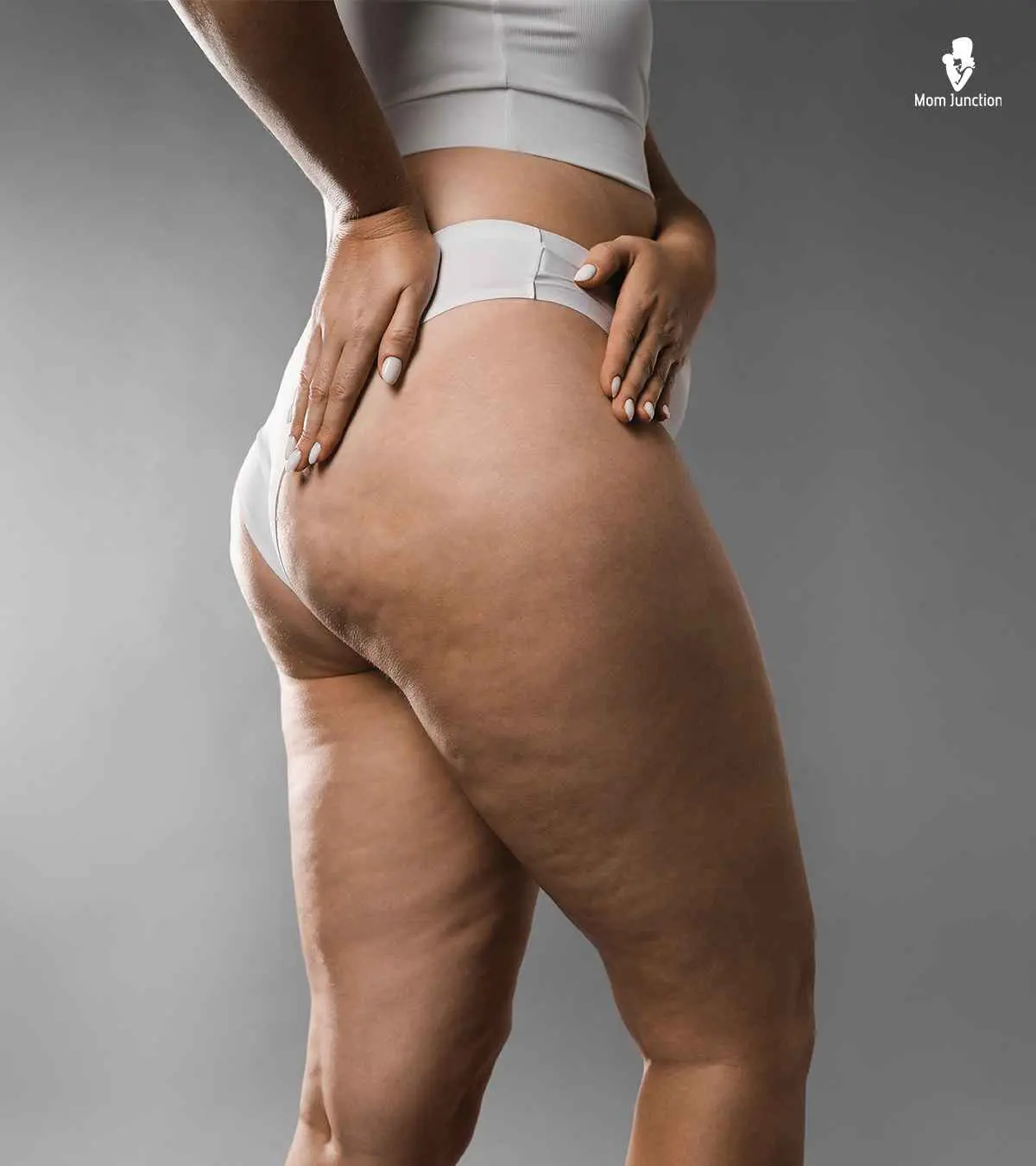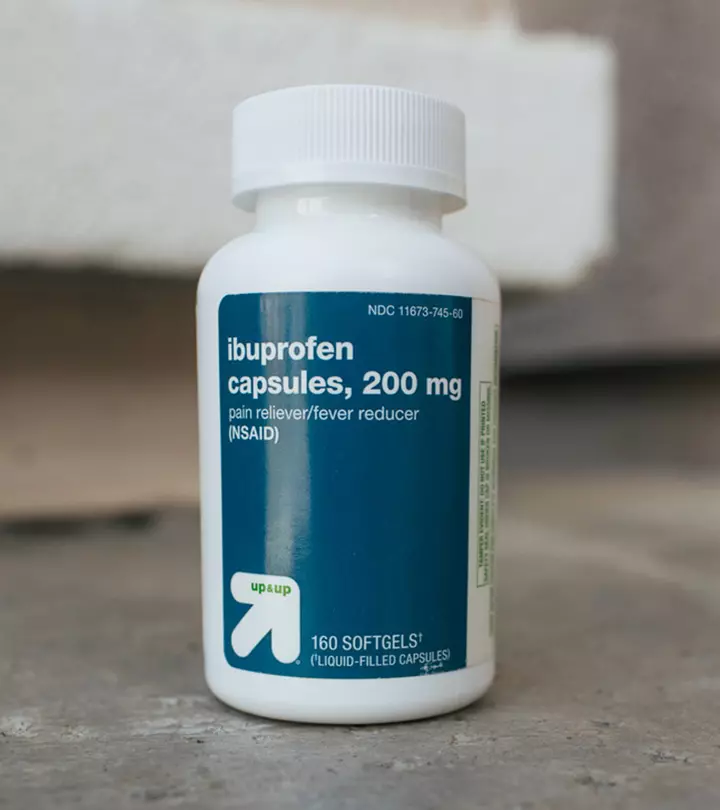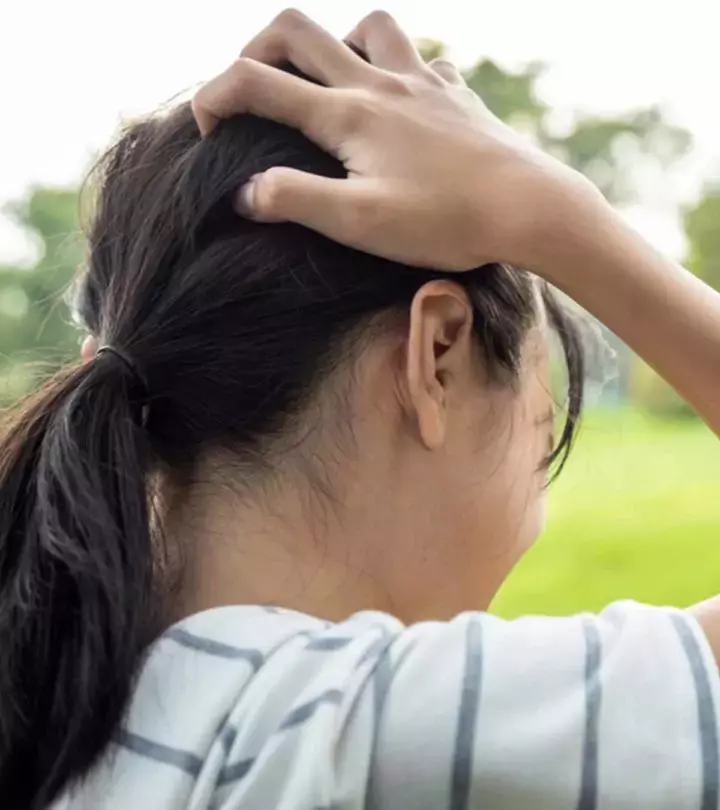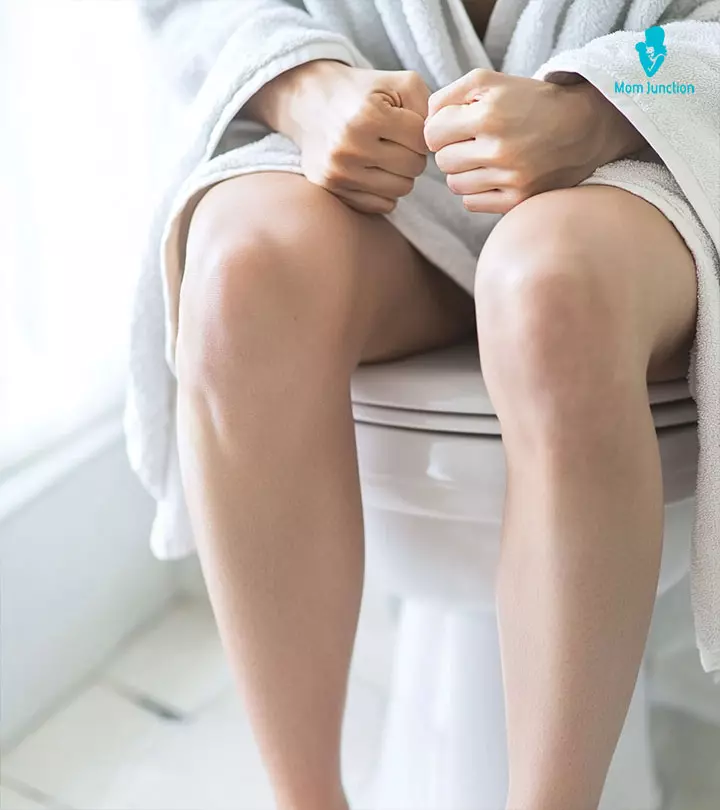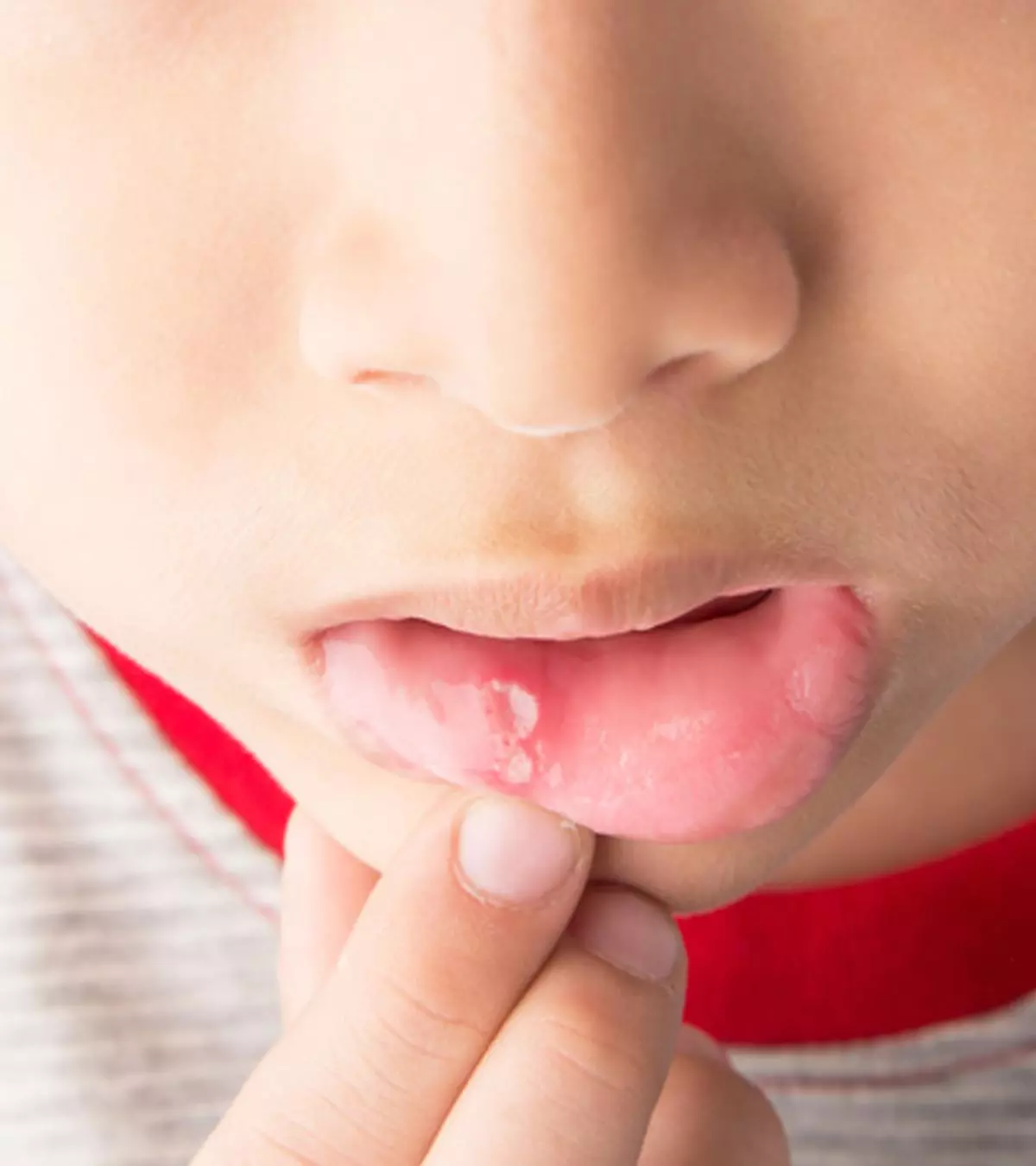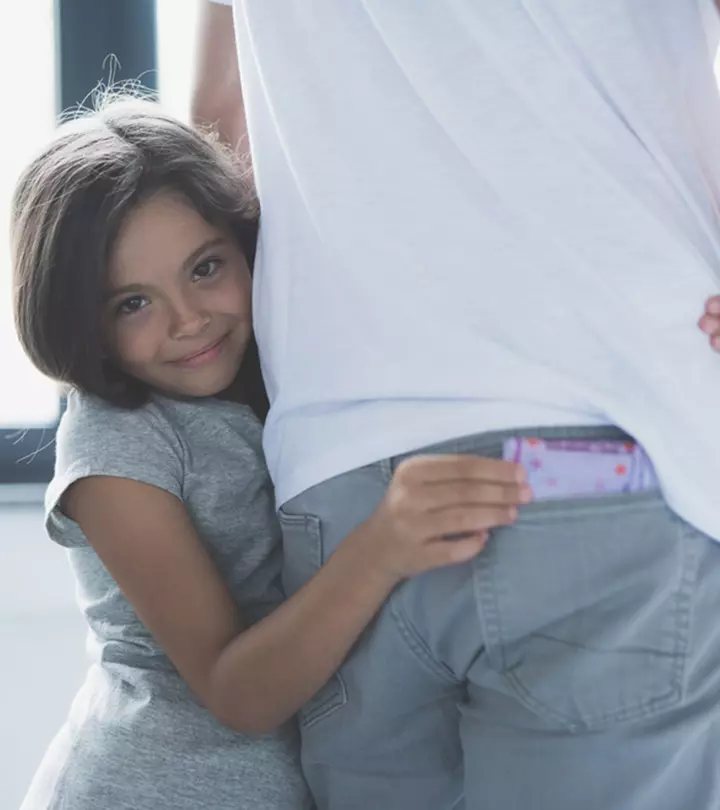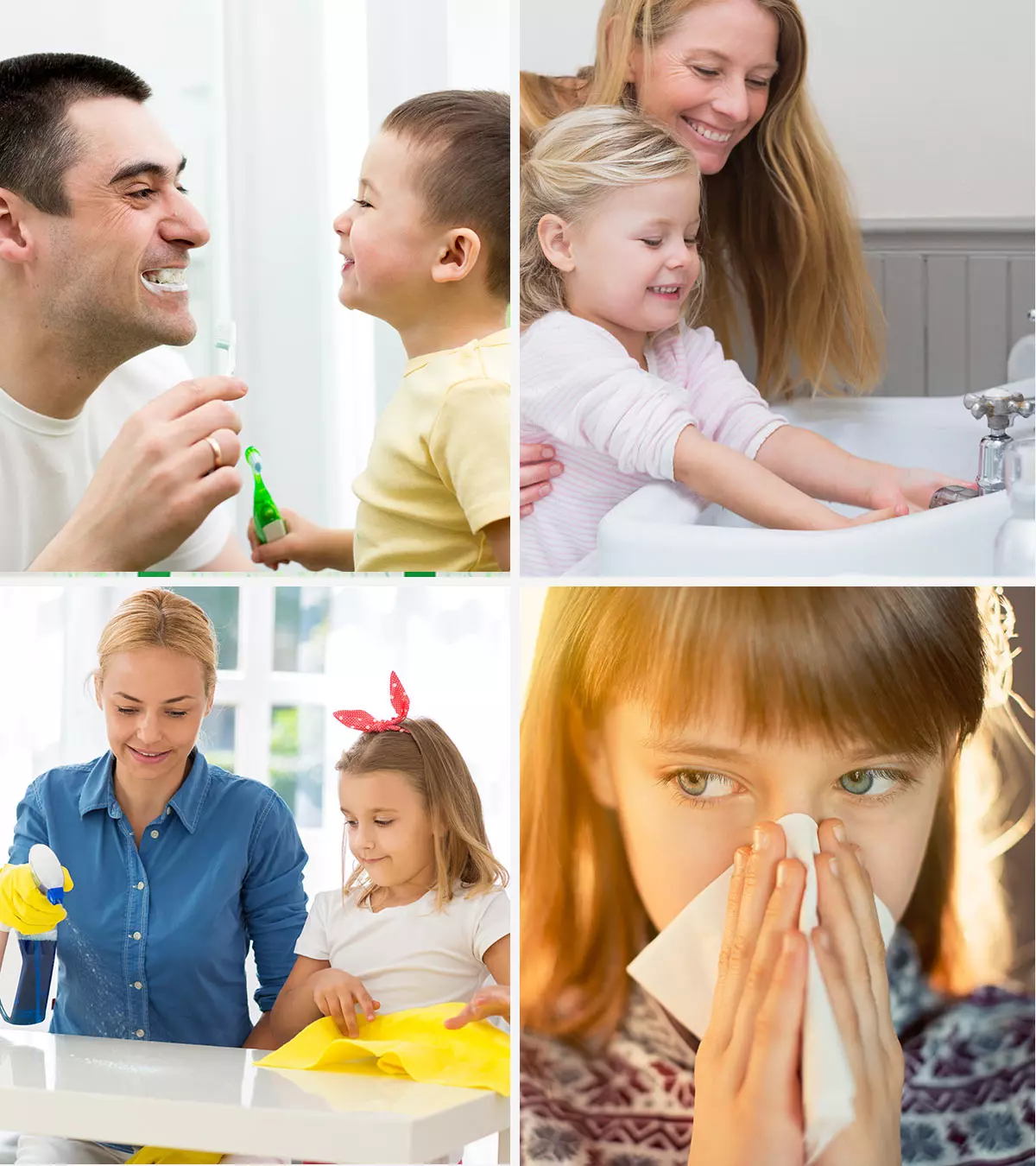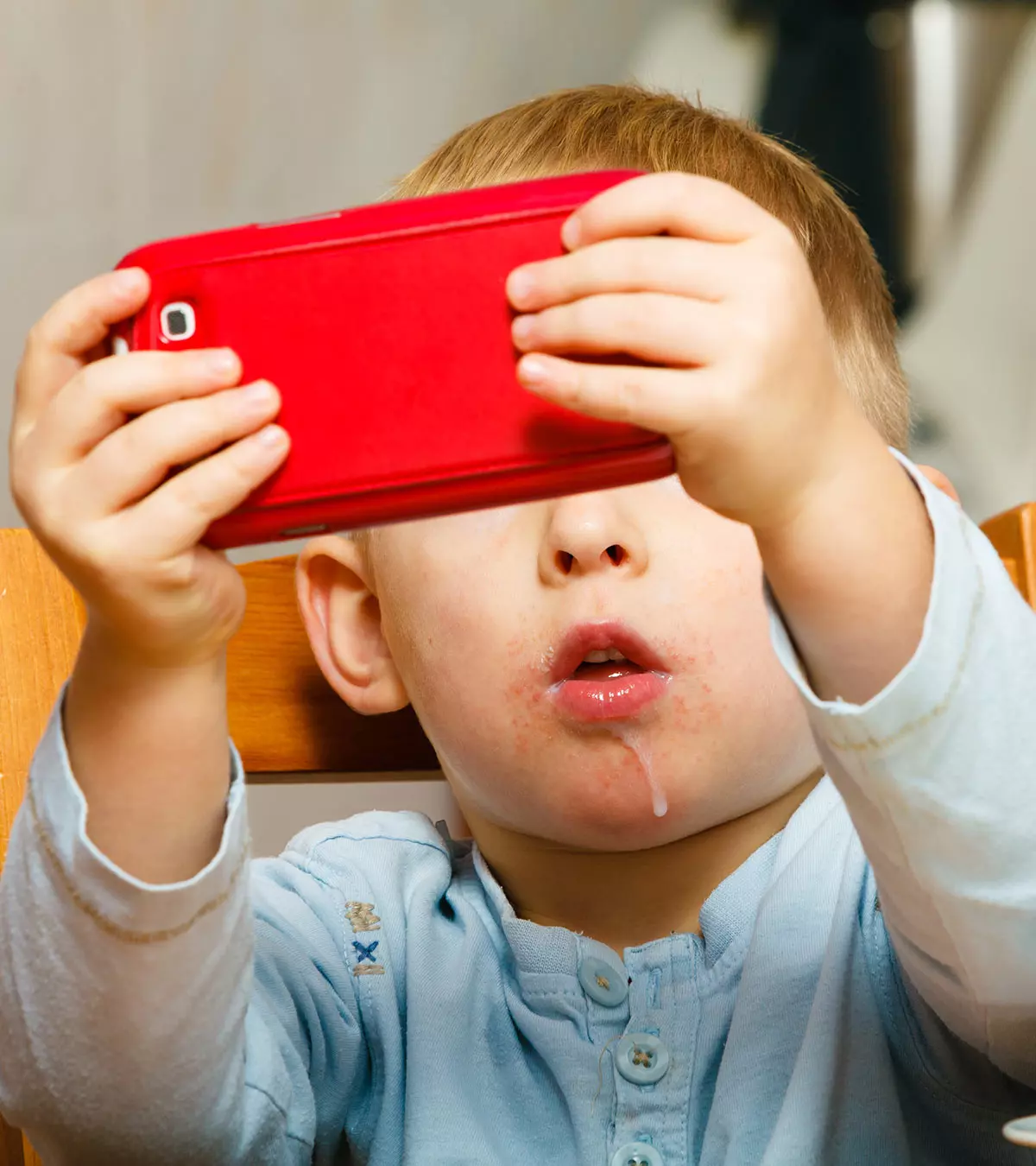
Image: Shutterstock
Excessive salivation in kids can be due to various reasons ranging from simple oral hygiene issues to complex neurological disorders. Unintentional leakage of saliva or excessive salivation is seen if there is overproduction of saliva or an inability to swallow these secretions. Increased salivation is also called sialorrhea, hypersalivation, or ptyalism. Anterior and posterior drooling is present; this means the excess oral secretions spill from mouth to face or the windpipe (airways). Skin irritation and social stigma can be common problems of children with anterior drooling. In comparison, posterior drooling can cause aspiration pneumoniaiWhen food or liquid is breathed into the lungs or airways. . Understanding the causes and effects of sialorrhea is essential for parents to provide the best care for their children. If your child has excessive drooling, it is important to consult a pediatrician. Read on to know the causes, diagnosis, complications, prevention, and treatment of increased salivation in children.

Key Pointers
- Excessive salivation in kids is known as sialorrhea, hypersalivation, or ptyalism.
- There are two types of excessive drooling: anterior drooling, which is visible and can cause skin irritation, and posterior drooling, which is not visible but can lead to choking, coughing, and aspiration pneumonia.
- Symptoms of sialorrhea include difficulty swallowing, motor and sensory dysfunctions, itching, and jaundice.
- There are several reasons for excessive salivation in kids, including neurological disorders, infections, metabolic disorders, autism, oral motor difficulties, and muscular disorders.
- Seeking medical attention is crucial to identify the underlying cause of sialorrhea and prevent further complications.
Symptoms Of Excessive Drooling In Children
There are generally two types of salivation present – anterior and posterior salivation. Anterior spillage of saliva or spit is visible. You may notice wet clothes and crusts, especially on your child’s face, neck, and chest. A few children drool while sleeping, making the bed and pillows wet (1).
Posterior drooling may not be visible, but children can have choking, coughing, and frequent aspiration pneumonia (1). In most cases, individuals have a mix of both types of excessive drooling.
Symptoms of underlying conditions causing sialorrhea may include:
- Motor and sensory dysfunctions in children with central nervous system dysfunction (2).
- Difficulty in swallowing, painful swallowing, and heartburn are typically associated with oropharyngealiThe part in the back of the mouth behind the oral cavity. and esophageal problems, which involve the muscles of your gut (2).
- Jaundice, itching (pruritus), Kayser–Fleischer rings (KF rings, golden brown eye discoloration due to copper deposits) are signs that a child may have a condition called Wilson’s disease (13).
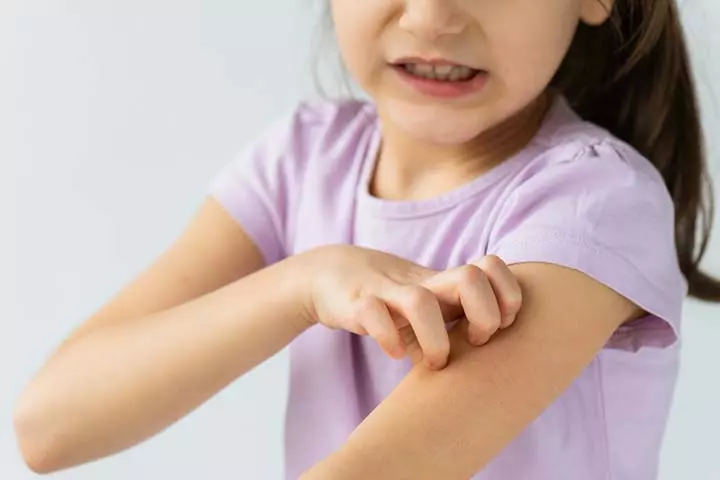
If you suspect your child has an acute or sudden onset of drooling due to poisoning, chemical or traumatic injuries, or foreign body in the esophagus, then seek immediate medical attention immediately (14).
When To See A Doctor
You should seek medical attention if you notice chronic excessive drooling, or if the drooling is accompanied by the following symptoms:
- Seizures or loss of consciousness
- Foaming or frothing around the mouth
- Choking and inability to breathe
- Blisters inside the mouth or on the lips
- Fever
Causes Of Excessive Drooling (Sialorrhea) In Children
Dr. Inas Ruhban, a pediatric resident physician at Ascension St John Hospital, Detroit, Michigan, says, “Excessive drooling in older children can be a symptom of a neurological disorder such as cerebral palsyiA neurological disorder affecting a person's muscle control, thus affecting the posture and balance. , Parkinson’s disease, or a brain injury.
“Other illnesses that can cause drooling include infections of the mouth, throat, or lungs, as well as certain metabolic disorders. When sick, children may produce more saliva due to increased congestion, coughing, or throat irritation. Some children with autism may have difficulty controlling their saliva due to swallowing or other oral motor difficulties.”
Excessive drooling can happen due to any one of the following reasons:
- Excessive production of saliva due to seasonal allergies.
- Poor muscle or oral motor control to contain the saliva.
- Failure to swallow saliva before it drools from the mouth (slobbering).
- Reduced gag reflex and other sensory and motor functions of the mouth.
Some medical conditions can also cause excessive drooling, including (2) (9):
- Nervous system disorders and injuries, such as cerebral palsy, stroke, traumatic brain injury, and congenital brain abnormalities. These conditions may cause drooling due to poor oral motor skills and sensations. Children with cerebral palsy may have drooling due to poor head control and a lack of facial tone.
- Muscular disorders, such as myasthenia gravisiAn autoimmune neuromuscular disease causing muscles weakness and communication and vision problems. , polymyositisiA rare, chronic inflammatory disease that causes muscle weakness, in particular, the muscle nearest to the trunk, such as hip, thighs, shoulders, and upper arms , etc., can cause poor oral motor function.
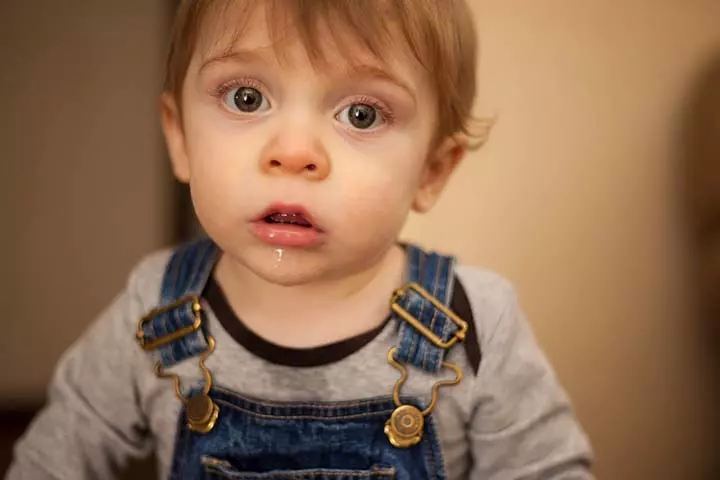
- Mental retardation and developmental delay may cause ineffective drooling, as well.
- Tongue thrust, that is, reverse or immature swallowing, is commonly seen in a drooling child.
- Lesions or infections in the mouth or throat due to conditions such as gingivostomatitisiAn oral infection where gums and oral mucosa are inflamed due to viral infections like herpes simplex virus type 1 (HSV-1), causing painful mouth sores , epiglottitisiA potentially life-threatening condition characterized by the inflammation of epiglottis, a flap of tissue covering the windpipe , tonsillitisiAn oral infection characterized by the inflammation of tonsils , and tonsillar abscesses.
- Chemical or traumatic injuries of the oropharynx.
- Esophageal injuries or stricture due to trauma, caustic ingestioniRelated to ingestion of an extremely toxic substance. , etc.
- A foreign body in the esophagus.
- Gastroesophageal problems, such as gastroesophageal or acid reflux in children.
- Some drugs, including clozapine, haloperidol, and morphine, may cause drooling, and poisoning with mercury and organophosphates could lead to increased salivation.
- Teens may be susceptible to drooling due to the abuse of substances, such as cocaine.
- Genetic diseases such as Wilson’s diseaseiA rare genetic disorder caused by abnormal accumulation of copper in the body, particularly the brain, liver, and cornea , Rett syndromeiA rare genetic neurological and developmental disorder affecting brain development almost exclusively in girls , and Riley-Day syndromeiA rare, inherited progressive disorder that affects the autonomic nervous system, causing dysfunctional blood pressure regulation, sensory loss, and other neurological problems (familial dysautonomia) can also lead to excessive drooling due to autonomic nervous system dysfunction (sympathetic and parasympathetic nervous system control saliva production and secretion) and oromotor dysfunctioniDifficulty controlling mouth and jaw muscles. .
- Mouth breathing whilst sleeping from nasal congestion/inflammation.
- Impaired tongue and lip movements or abnormal muscle tone (called intra-oral motor impairment).
- Difficulty swallowing or decreased ability to swallow (dysphagia).
- Inadequate lip closure, leading to an open-mouth posture.
- Poor posture, including impaired control over the head or trunk.
 Health fact
Health factThese acute, chronic, or hereditary conditions can lead to changes in body functions, thus resulting in excessive salivation in kids. Seek medical attention to identify the exact cause of sialorrhea and prevent further complications.
Risk And Complications Of Excessive Drooling In Children
Excessive salivation in kids can result in physical, psychological, and social issues, and can result in various side effects, such as (2).
- Damage to the skin around the mouth from saliva (maceration)
- Angular cheilitis that is maceration on the angle of lips
- Dehydration due to fluid loss
- Bacterial infection
- Unpleasant odor
- Social stigma
- Aspiration pneumonia due to inhalation of saliva, food, or drinks to the lungs. Chronic aspiration of saliva may often go undiagnosed in pediatric patients, until the development of significant changes to the lungs.
Frequent drooling in children can also result in wet clothes, toys, etc., and may also require clothing changes more frequently.
Additionally, sialorrhea can cause emotional problems in children. The social stigmatization and bullying from peers due to frequent drooling may affect the mental well-being of young people. Furthermore, language and speech delay can also occur in some children due to excessive salivation.
Diagnosing Excessive Drooling In Children

Your child’s pediatrician can diagnose anterior drooling by observation. They may ask for a history of cough, choking, and pneumonia to diagnose posterior sialorrhea. Additionally, your child’s doctor may assess the child’s condition by the following methods (3) (9):
- Dental and medication history may be asked to determine the underlying cause.
- The child may also be assessed for any communication abnormalities and eating and drinking abilities.
- Doctors may order blood tests to look for infections that may cause increased salivation in kids.
- Upper gastrointestinal endoscopy and radiography during swallowing may be performed to elicit the exact cause of excessive drooling.
- Additional tests, such as brain MRI, CT, etc., may be ordered based on coexisting symptoms.
Can Excessive Drooling Be Cured?
Complete elimination of sialorrhea due to neurological problems or chronic conditions may not always be possible. However, treatment measures could reduce excessive drooling. All the treatments for sialorrhea are aimed at minimizing salivary production and thus controlling excessive drooling. Complete removal of glands is not possible since it causes dry mouth, which may result in other problems, including frequent oral infections or ulcers (1).
However, children with excessive drooling due to acute conditions such as tonsillitis, dental caries, etc., can be completely cured after the resolution of the underlying conditions.
 Quick fact
Quick factTreating Excessive Drooling In Children
Pharmacologic and non-pharmacologic interventions are recommended for managing excessive drooling in children. If the condition is chronic, then medicines with management procedures would be suggested.
The following non-invasive modalities have not been proven to cure but can reduce the production of saliva in some cases (4):
- Position training: An appropriate body posture with a good head and trunk control may help to improve drooling and swallowing problems caused by inadequate oral control.
- Eating and drinking skills training: This training is aimed to achieve good eating and drinking skills, with proper lip closing and tongue movements. These may help reduce salivary secretion.
- Oral facial facilitation techniques: These techniques help to control the motor movements and sensation of the oral muscle and swallowing frequency. The training is usually provided by a speech therapist, using hyper and hypotonic muscles. It may include icing, brushing, vibration, or manipulations such as patting or stroking to improve oral awareness and control.
- Speech therapy: This could help improve tongue mobility, strength, and swallowing. It may also help achieve lip closure in a few children. Good results are often seen in children who started training early.

- Behavior therapy: It encourages and teaches children to swallow and wipe excess saliva. It also aims to decrease the sucking of fingers or objects.
- Oral appliances or prosthetic devices: Devices to achieve lip closure and mandibular stability may help reduce drooling. You may discuss this with your child’s healthcare provider about a suitable product.
- Exercises and games: Exercises involving facial expressions, such as smiling, lip articulation, blowing whistle or harmonica, and sucking liquid with straw can help improve lip closure, and saliva suction (9).
The following medical and surgical treatment options can also control the excessive production of saliva (3) (5):
- Oral medicines: These daily medications may help reduce the amount of saliva produced. These are used strictly under the guidance and supervision of your doctor.
- Botox injections: The injection is made from botulinum toxiniThe toxin released by the bacterium Clostridium botulinum that affects the nerves' functions and prevents muscle contraction. , and can diminish the saliva production by the salivary gland.
- Salivary gland ablation: It is a percutaneous procedureiSurgery performed through the smallest possible incision, such as a needle puncture through the skin. , injecting agents such as alcohol to the gland to cause the shrinking of the gland. This could lead to a reduction in saliva production and drooling frequency.
- Surgery: Removal of salivary glands (glandular excision) is done to decrease the saliva. The same can be achieved by disconnecting ducts that drain saliva from salivary glands to the mouth. It is not recommended, and only done in extreme conditions.
Surgery and salivary gland ablation require anesthesia. Salivary gland ablation is usually given on one side of the face. If there is no reduction in sialorrhea, your child’s doctor may consider injections for the other side of the face during follow up visits. This procedure may often result in painless postoperative facial swelling weeks after the ablation.
Salivary gland ablation with alcohol has the risk of injury to the facial nerves. Rarely, this could complicate into temporary facial muscle paralysis or weakness. There is no evidence that the child suffers from dry mouth after the procedure since the glands produce the required amount of saliva.
The removal of salivary glands may be considered as a last resort. The procedure is likely to be considered when the benefits of the surgery outweigh the potential risks. Your child’s pediatrician may make referrals to a specialist multidisciplinary team for the assessment, management, and treatment of excessive drooling.
Preventing Excessive Drooling In Children
Acute sialorrhea due to inflammation and infections of the mouth and throat, and dental problems can be prevented with timely diagnosis and treatment. You can teach the following methods to your child to prevent excessive drooling if possible (6):
- Maintain good oral hygiene.
- If your child can wipe saliva, then you may make them wear an absorbable wristband, like that worn by sportspersons. This can be more effective and acceptable than bibs or handkerchiefs, in older children.
- Ask them to dab saliva instead of wiping it to avoid stimulation of salivary glands.
- Protective clothing and bandanas can be used if there is too much saliva coming from the mouth in older children.
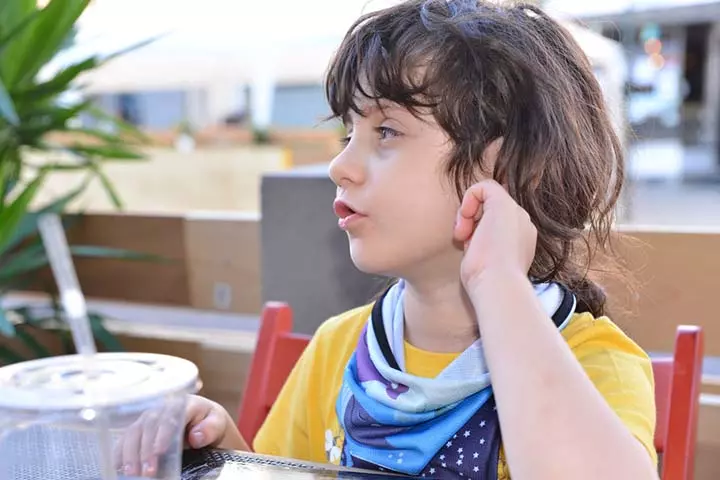
- Provide gloves, elbow splints, or teach not to put fingers or objects in the mouth. This helps to avoid saliva production due to mouthing fingers or objects.
- Avoid sweet fizzy drinks and acidic foods, such as lemon and vinegar, that may act as a stimulus for increased salivary secretion.
These methods do not completely prevent or cure drooling problems but have an impact on quality of life effects.
How To Prevent Drooling While Sleeping?
It is normal for babies and toddlers to drool while sleeping as they are still to develop complete control over muscles. Teething is also a common cause of drooling, other than mouth or throat inflammations and infections.
If your child is older, then you can ask them to sleep on their back to reduce drooling during sleep. If it is difficult to sleep on their back, then use wedge pillows that may help reduce drooling while sleeping on the sides (7).
Drinking enough water can reduce the risk of dehydration as well as avoid the production of saliva due to dry mouth. You may also encourage them to use a mandibular device, oral device, or mouthpiece as per the recommendations of a healthcare provider to avoid drooling.
Frequently Asked Questions
1. When should a child stop drooling?
Drooling becomes apparent in babies at around three to six months of age and usually stops once they are about two years old (10).
2. When should I be worried about drooling?
Drooling is considered normal in the first 6 to 18 months of life. However, frequent or excessive drooling in children aged four years and above may indicate an underlying problem warranting prompt medical evaluation (9).
3. Is drooling a symptom of autism?
Drooling isn’t a specific symptom of autism. However, it is commonly seen in children with autism due to delays or difficulties in muscle control and sensitivity (10).
4. Does a cold cause excess saliva?
Yes. Cold and allergies may lead to excessive drooling in babies. This is because the body produces more saliva to flush out toxins (11).
5. Can anxiety cause salivation in children?
Yes. Any emotional or psychosocial stress can cause children to drool due to hyperstimulation (12).
Infographic: Possible Reasons For Excessive Drooling In Children
Excessive drooling in a child may indicate minor reasons that can be treated easily or, sometimes, it may occur due to a serious condition. Check out the infographic below for probable causes for your child drooling excessively. Knowing these causes can help you seek timely diagnosis and treatment for your child.
Some thing wrong with infographic shortcode. please verify shortcode syntax
The causes of Sialorrhea or excess salivation in kids include poor oral hygiene, infections, improper oral muscle control, complex disorders of the nervous system such as cerebral palsy, and brain injury. Outward spillage of excess saliva may affect the skin around the mouth, while an inward movement can cause choking or aspiration pneumonia. Drooling
can have a psychosocial effect as well. Treatment aims to reduce excess saliva production, and doctors may suggest techniques such as speech therapy or positional training, prosthetic devices, medical management, or surgical correction depending on the underlying cause. You can help your child by following preventive measures and providing emotional support.
Illustration: Causes Of Drooling (Sialorrhea) In Kids & Ways To Stop It
_in_kids__ways_to_stop_it_illustration.jpg.webp)
Image: Dall·E/MomJunction Design Team
Pick up on effective home remedies to control excessive salivation. Learn about natural techniques to decrease saliva production and maintain a dry mouth. Obtain valuable tips for managing this condition effortlessly.
References
1. Sialorrhea (Excessive Drooling); Nationwide Children’s Hospital
2. Alexander KC Leung and C Pion Kao; Drooling in children; The United States National Library of Medicine
3. Neil G. Hockstein, et al.; Sialorrhea: A Management Challenge; The American Academy of Family Physicians
4. Ganesh Bavikatte, et al.; Management of Drooling of saliva; British Journal of Medical Practitioners
5. Rachael Lawrence and Neil Bateman; Surgical Management of the Drooling Child; The United States National Library of Medicine
6. C B R Fairhurst and H Cockerill; Management of drooling in children; British Medical Journal
7. Drooling in Your Sleep? Here’s Why It Happens and How to Treat It; Sleep Advisor
8. Bruna Melo, et al.; Management of sialorrhea in children; Pediatric Oncall Journal
9. Saliva Control in Children; The Royal Children’s Hospital Melbourne
10. Excessive Drooling in Infants; Birth Injury Help Center
11. Drooling; Mount Sinai
12. Alexander KC Leung and C Pion Kao; (1999); Drooling in children; NCBI
13. Joshua Immergluck and Arayamparambil C. Anilkumar; Wilson Disease; StatPearls; NCBI
14. Asmaa Fady Sharif et al.; Evaluation of Pediatric Early Warning System and Drooling Reluctance Oropharynx Others Leukocytosis scores as prognostic tools for pediatric caustic ingestion: a two-center, cross-sectional study; Environmental Science and Pollution Research International
Community Experiences
Join the conversation and become a part of our nurturing community! Share your stories, experiences, and insights to connect with fellow parents.
Read full bio of Dr. Thulja Trikamjee
- Dr. Inas A. Ruhban is a pediatrics resident physician at Ascension St John Hospital in Detroit, MI. She received her medical degree from Damascus University Medical School. In addition to her medical career, Dr. Ruhban owns an online store for women's clothing, and is the mother of a two-year-old boy.
 Dr. Inas A. Ruhban is a pediatrics resident physician at Ascension St John Hospital in Detroit, MI. She received her medical degree from Damascus University Medical School. In addition to her medical career, Dr. Ruhban owns an online store for women's clothing, and is the mother of a two-year-old boy.
Dr. Inas A. Ruhban is a pediatrics resident physician at Ascension St John Hospital in Detroit, MI. She received her medical degree from Damascus University Medical School. In addition to her medical career, Dr. Ruhban owns an online store for women's clothing, and is the mother of a two-year-old boy.
Read full bio of Dr Bisny T. Joseph
Read full bio of Swati Patwal
Read full bio of Anindita Ghatak







